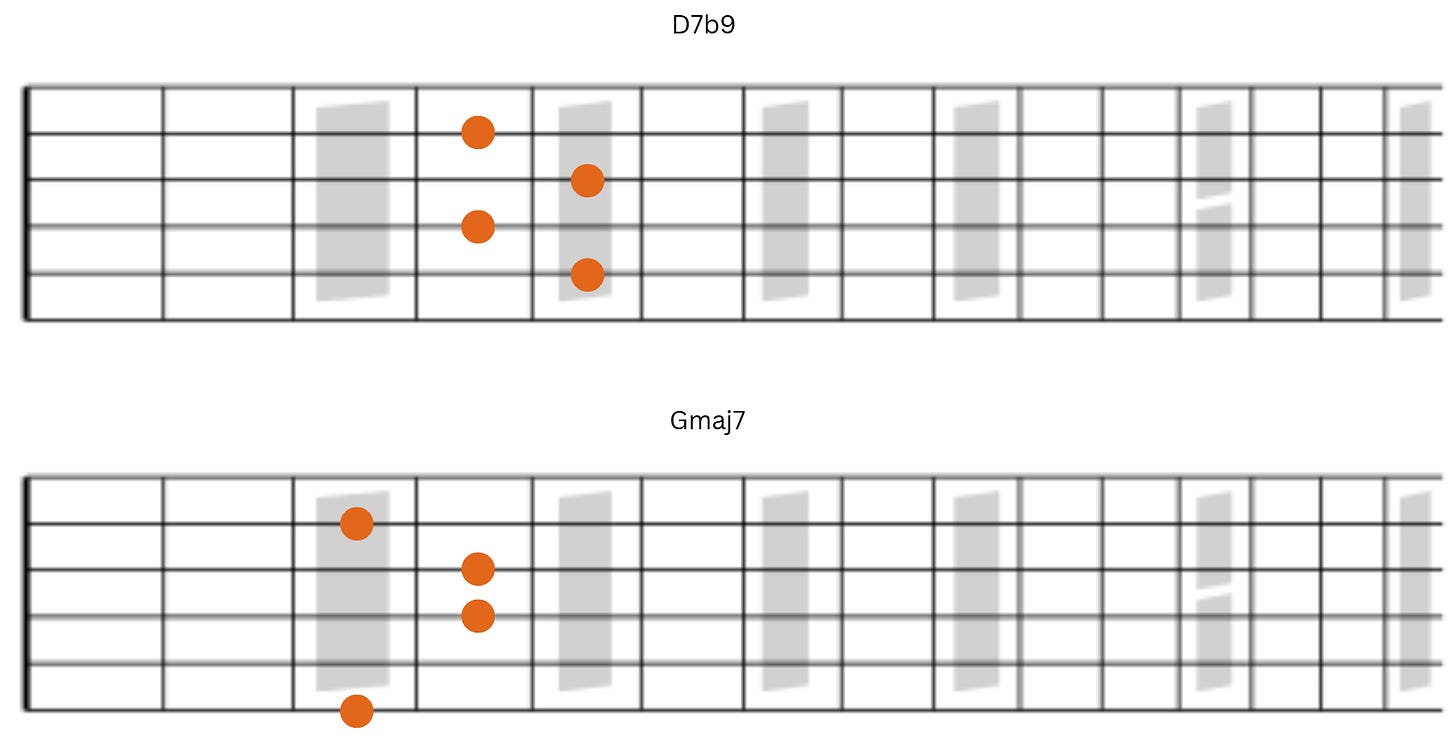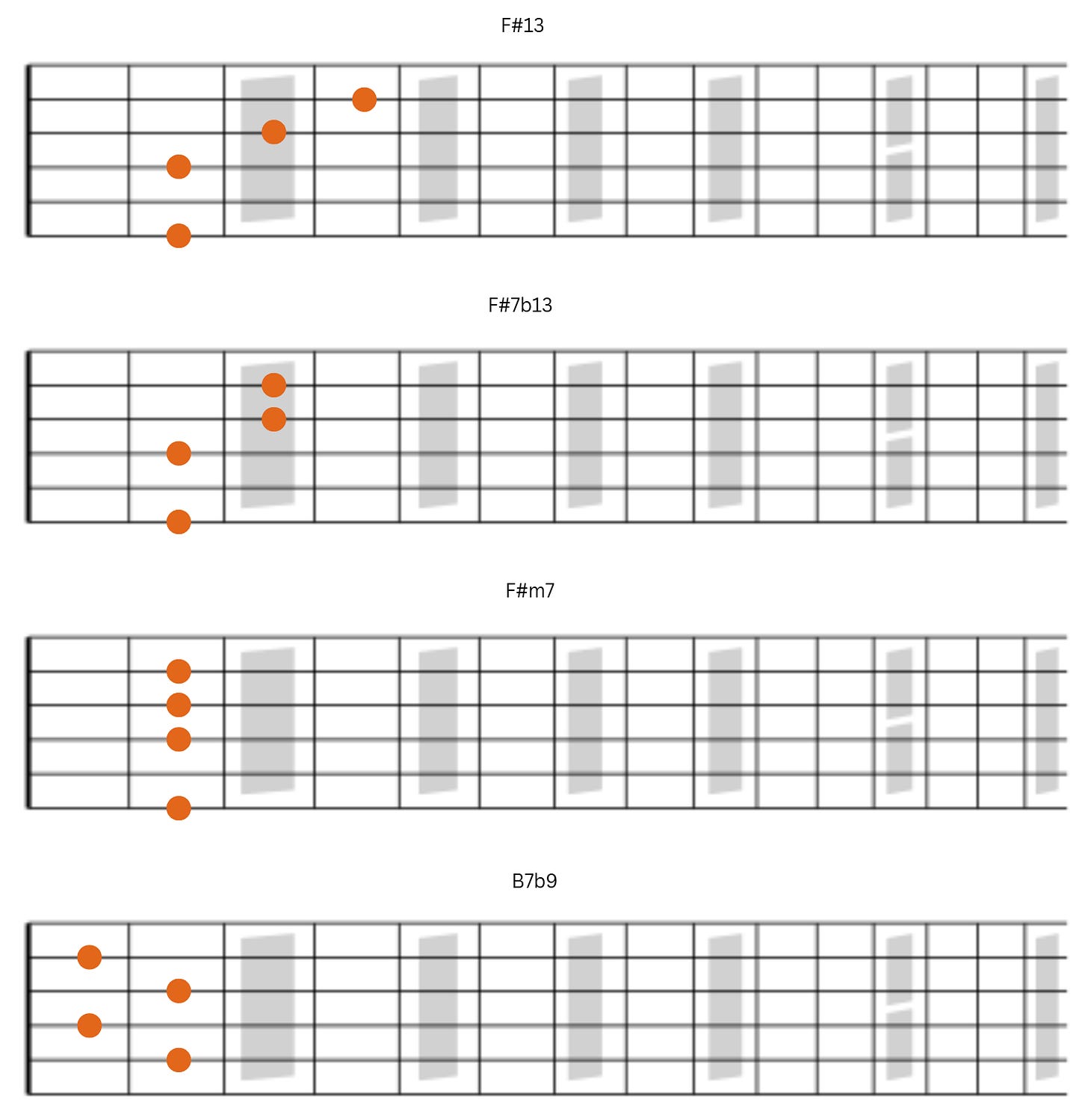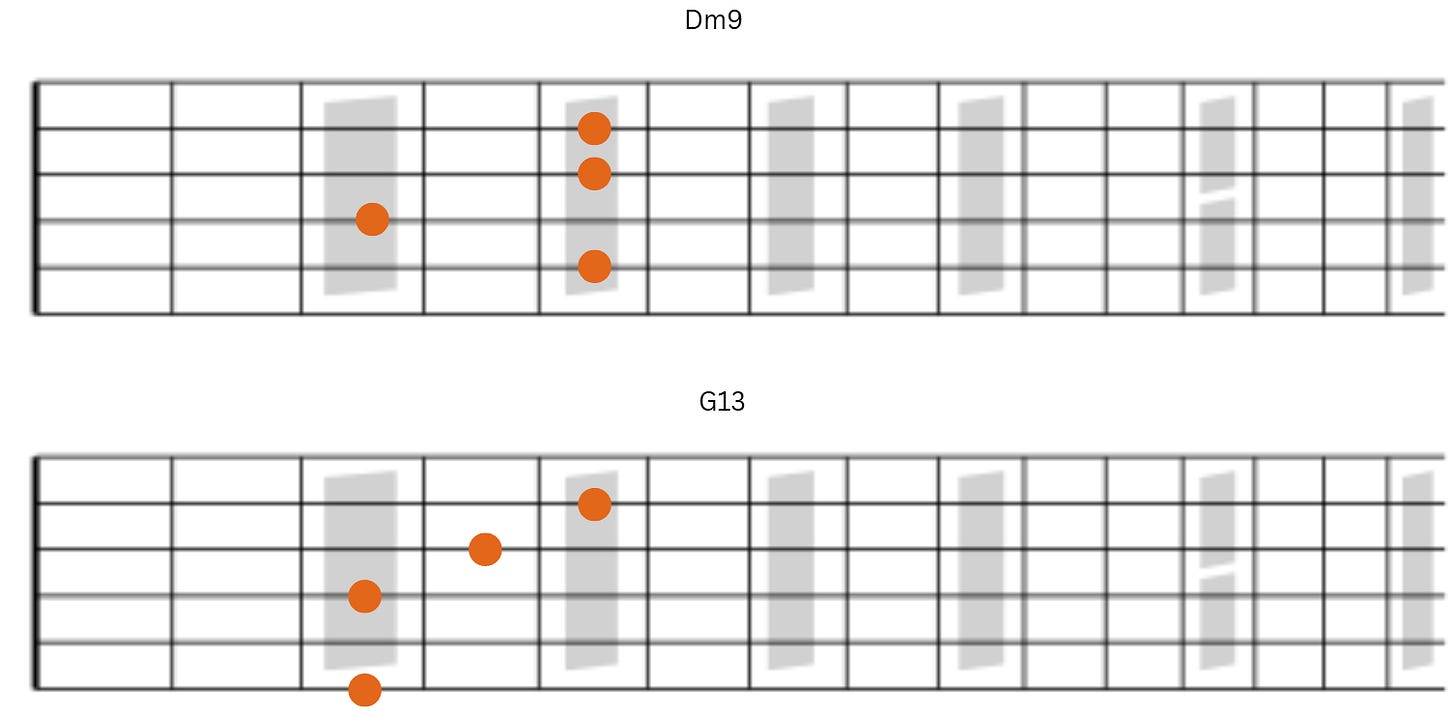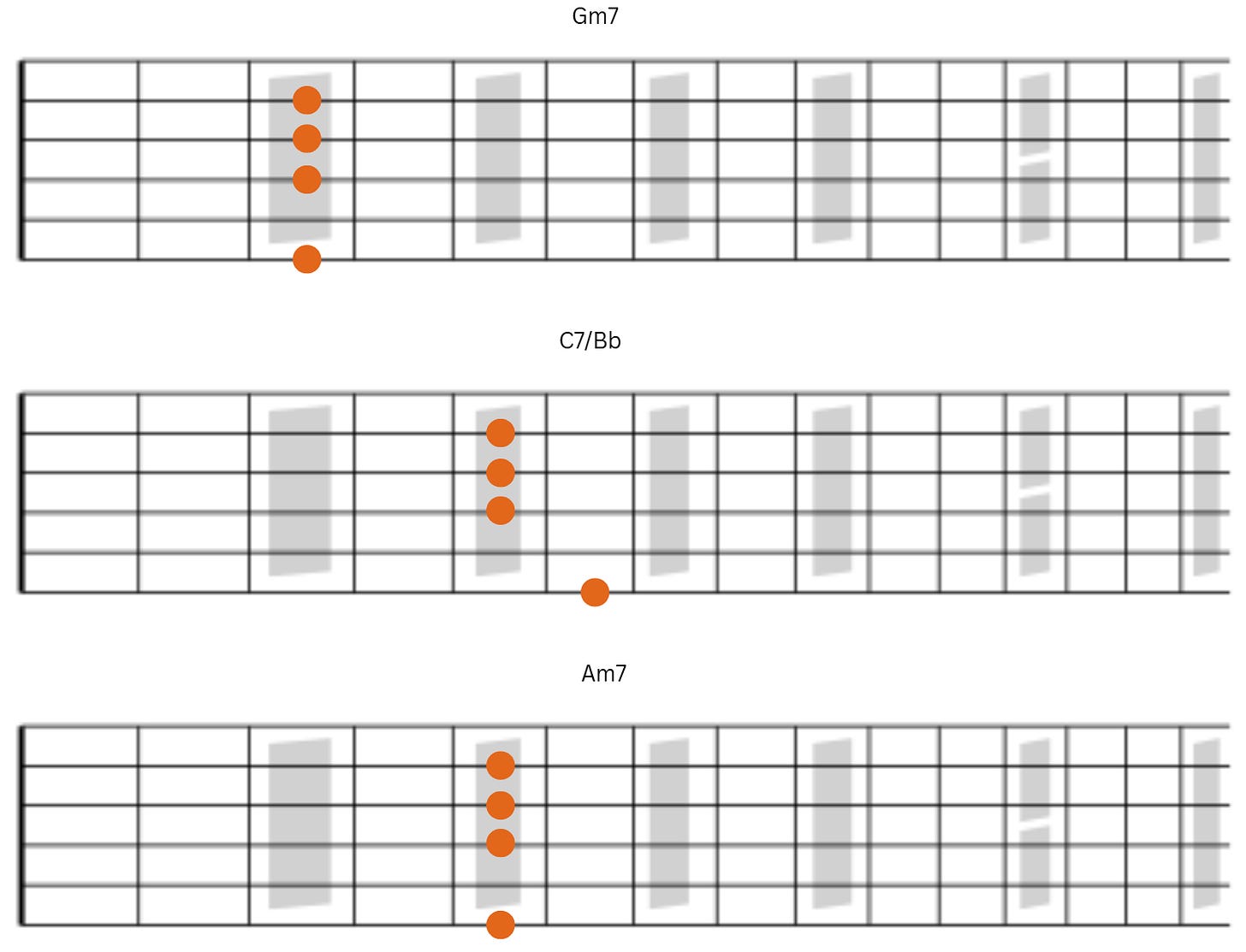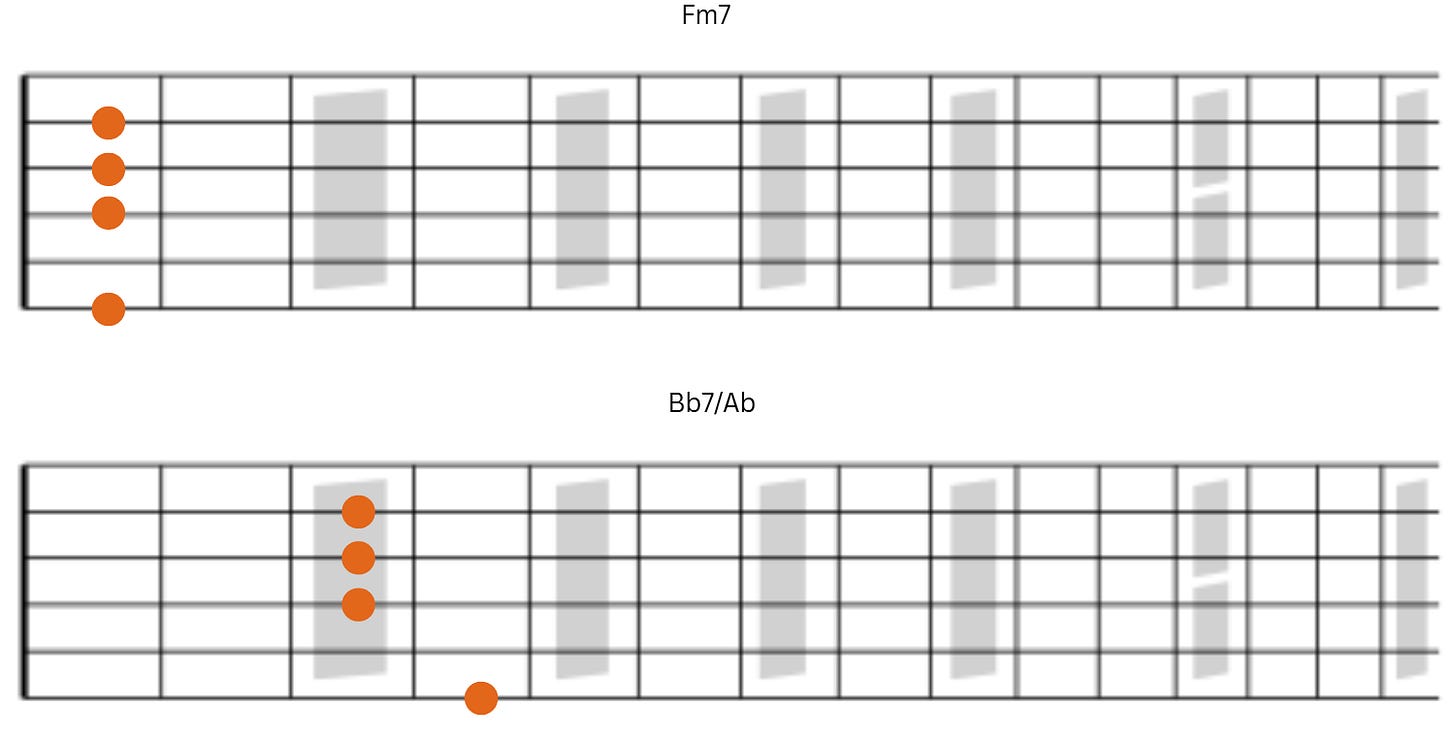Chord Shapes on Wave
Comp with good voice leading
We’ll work with four-note voicings with string combinations of 5-4-3-2 or 6-4-3-2. Essentially, the upper three notes of the chord will remain on strings 4-3-2 while the bass note will land on string 6 or 5.
Here we will start with Dmaj9. This allows us to keep the root, third, and seven on strings 6-4-3 while string 2 will have extensions or the fifth of the chord.
Next we have Bbdim7 followed by Am7. Notice that notes on strings 2 and 4 remain the same and notes on strings 6 and 3 fall by a half-step.
The Am7 will act as a ii chord as we approach the Gmaj7. Here we see the D7b9 moving to the Gmaj7, completing a ii-V motion.
Then we have Gm6. Again observe how some notes remain the same while others fall. Generally, notes will descend.
This next chord sequence has chromatic on string 2.
Next we have E9 followed by Bb7. Notice that the notes on strings 3 and 4 remain the same.
Now we have the A7b13. This moves nicely to the Dm9 chord.
Then we settle onto Dm9-G13.
So that covers the A sections. Now let’s go over the B section.
We start with Gm7-C7/Bb-Am7
Continuing on, we have the same progression transposed down a whole step.
Then A7b13 will direct us back to the A section.
Thanks for reading. Please subscribe and share.



